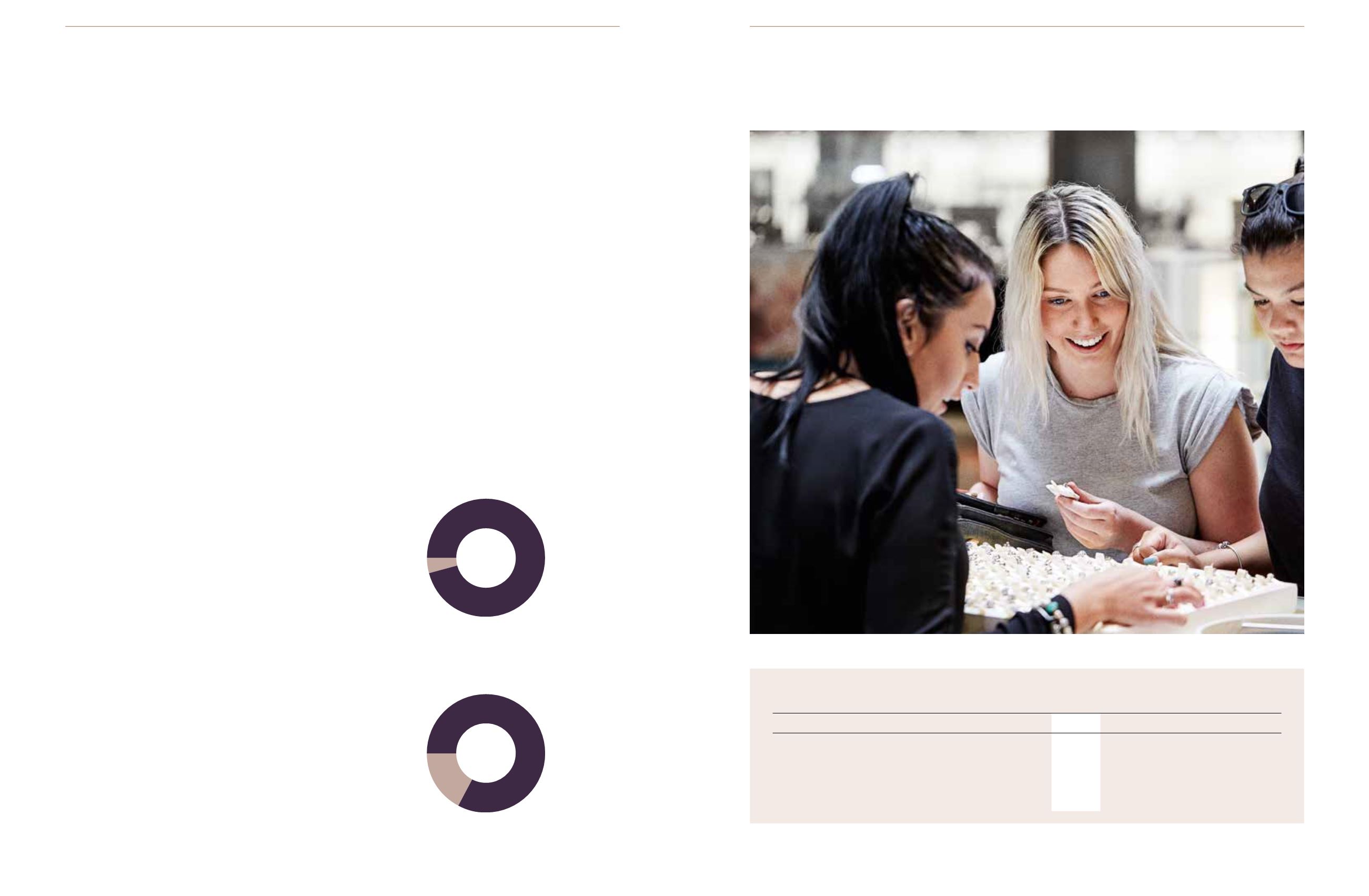

PANDORA ETHICS REPORT 2016
28
29
CORE MATERIALS
The vast majority of PANDORA’s products are made of
silver and/or gold, often decorated with man-made cubic
zirconia stones and less often with gemstones or diamonds.
At PANDORA, we are fully aware that the mining and
processing of precious metals, gemstones and semi-
precious stones can be associated with adverse social and
environmental impacts. As a major player within the
jewellery industry, we recognise our ability as well as our
responsibility to help develop a more responsible supply
chain for core jewellery materials.
In 2016, all gold grains entering PANDORA’s crafting
facilities were sourced from reputable refining companies,
certified according to the RJC Code of Practices. Furthermore,
all gold must be certified conflict free according to the
London Bullion Market Association (LBMA) “Good Delivery
List” or the RJC Chain-of-Custody Standard for gold.
Notably, 86% of gold grains originated from recycling and
the remaining 14% from certified responsible sources –
including mining. In 2016, 91% of the silver grains entering
PANDORA’s crafting facilities originated from recycling.
Moreover, our silver grain suppliers are certified members
of the RJC.
Additionally, PANDORA cooperates with a number of highly
specialised manufacturers of semi-finished gold and silver
parts. In 2016, these partners produced approximately 16
million pieces of jewellery. All such partners must deliver
auditable proof that the gold used in their products is sourced
from RJC-/LBMA-certified suppliers. Today, there are no
similar certification schemes for silver, but promising initiatives
are expected within 2017/18. PANDORA supports these
initiatives and is actively participating in the development
of these standards.
Stones
Man-made stones, natural gemstones and diamonds are all
included in our assortment. While we have made no decision
to remove diamonds and gemstones from our assortment,
man-made stones are taking on an increasingly important
role in our collections. In 2016, we used approximately 2,7
billion stones, the vast majority being man-made cubic
zirconia. Man-made stones can be identical to their natural
gemstone counterparts in almost every way, and will often
exhibit the same basic crystal structure as natural stones.
However, the risk of contributing to adverse human rights
impacts are minimal and the environmental cost is
significantly lower (see PLANET).
Man-made stones are also fully traceable and can be supplied
in quantities suitable for large-scale jewellery crafting.
Finally, they exhibit fewer variations in colour and quality,
which considerably reduces material waste.
From 2012 to 2016, diamonds were only included as a feature
on special-edition PANDORA Club charms. The diamonds
on these charms were all natural diamonds recycled from
discontinued PANDORA jewellery. In the sourcing of natural
diamonds, which we continue to do to support customer
demand for existing collections, we only accept suppliers
who are members of the RJC and who can certify compliance
with the System of Warranties, established by the World
Diamond Council for diamond sourcing.
Origin of gold
100% RJC-certified suppliers
100% certified conflict free
14% Mined
86%
Recycled
Origin of silver
100% RJC-certified suppliers
9% Mined
91%
Recycled
ORIGIN OF PRECIOUS METALS
PRODUCT
– KEY PERFORMANCE INDICATORS
2016
2015
2014
2013
Suppliers enrolled in PANDORA's Responsible Suppliers Programme, %
100
100
100
-
Total sourcing value audited by external experts, %
>85
>80
>80
>75
Silver and gold grain suppliers certified by Responsible Jewellery Council, %
100
100
100
100
Suppliers trained in ethical business practices at annual PANDORA
199
150
-
-
supplier conferences
Great customer service in one of our stores
















